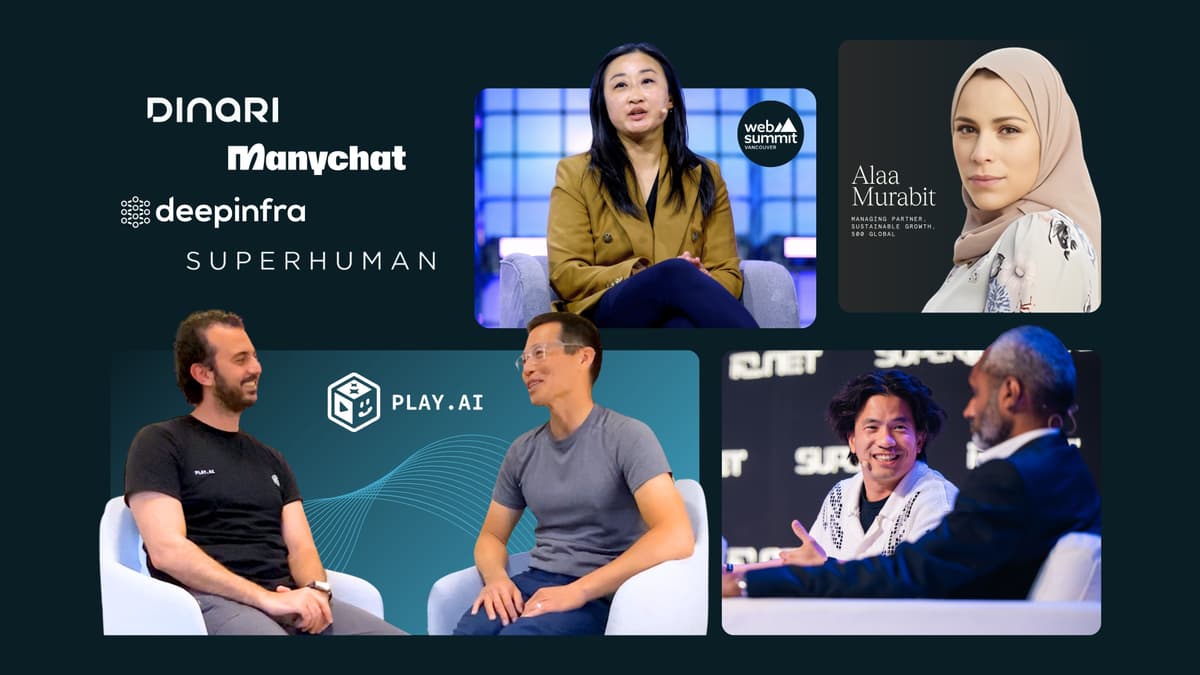Employers have clocked out on workforce investment by continuing to invest in outdated technology solutions for a workforce that has been changing rapidly.
2021.11.16

500 Global Team

Credit: Thomas Serer on Unsplash
A donut shop in Salt Lake City recently displayed a sign lamenting the fact that “due to government and state handouts, no one wants to work anymore.” The reaction on social media was swift, with the New York Times’ Farhad Manjoo and others throwing back the blame on the donut shop for probably not paying workers enough.
I’ve been hearing those types of complaints from employers a lot: “I can’t find workers to fill our jobs. Workers are unmotivated and lazy. Unemployment benefits are too high, and workers are being disincentivized from returning to work.”
Well, hold on.
America’s recent lack of job growth can be tied to economic and workforce issues that have been worsening for years. The U.S. ranked second to last among 29 developed nations in investing in taxpayer-funded work training programs, and that number has been falling year over year for the last 30 years, according to the OECD.
While worker productivity has only been rising, employers have clocked out on workforce investment by continuing to invest in outdated technology solutions such as desktop only e-learning platforms and classroom seminars, for a workforce that has been changing rapidly. It is wild to think that with all of the technology available today that we are still printing manuals and forcing workers to watch learning modules like they are back in school. In fact, 91% of all training dollars still only go towards classroom instruction or desktop-only based learning. And, only 1% of all workforce training is available mobile-first.
Now, why does this matter?
When I say that our workforce is changing, what I mean is that work isn’t getting much better for everybody. According to a pre-pandemic report by the Brookings Institute, it was found that nearly one in two jobs in America are “bad jobs.” That means those jobs pay you a wage below the poverty line. These workers are stuck in bad jobs with bad circumstances and minimal opportunity to reskill for a career that would offer them an opportunity for a better future.
This is because the tools available for workers aren’t available for all workers. It is found that of the over $177 billion in annual employer-funded formal training programs, nearly 60%, go towards workers that already have a four-year college degree. And, only 16% of companies have a dedicated budget for updating their learning and training technology. A tragedy at a time when more than 41 million workers — 31% of the U.S. workforce — lack digital skills.
It is the workers who get paid the least that are paying the most in today’s “future of work.” Workers — particularly low-wage workers, women, and workers of color — have not been valued and prioritized in America’s workforce for far too long. Now, workers are fighting back by refusing to take bad jobs.
So, what do we do?
We need to work together. This means the private-sector, public-sector and academia coming together to create a workforce infrastructure that truly supports every worker. Below is an outline of the five key tenets of a plan to raise every worker:
- Reskill workers in COVID-19-impacted jobs and industries, including individuals who have lost their jobs, work in changed environments and those who are starting new jobs. This means designing and deploying programs that are stackable, agile and focused on careers where workers may experience 15 to 20 job transitions in a lifetime.
- Align companies, education providers, public workforce divisions and community organizations to form a network of “21st Century Industry Partnerships.” This means colleges working with employers to upgrade existing curriculum and create a line of communication that ensures what we are teaching in the classroom makes sense for today’s workplace.
- Invest in a future of work infrastructure that leverages technology to reach workers – regardless of tenure or job title – with a specific focus on our most vulnerable workers. This means using mobile-first technologies to bring upskilling and reskilling programs to the worker. Today, more than 96% of all workers in America own a mobile phone, yet less than 1% of all workforce training is mobile-first or cross-platform.
- Support a worker’s freedom to learn and upskill anytime, anywhere. This means updating outdated labor rules and regulations that were written to protect workers, but now create an environment where companies are concerned about risks when investing in off-the-clock training solutions. A recent survey of over 500 employers by 1Huddle found that only 1 in 10 companies make job training accessible to every worker 52 weeks a year.
- Eliminate discrimination that restricts a worker’s ability to fairly compete, acquire new skills and access training opportunities. This means purposefully dismantling programs and structures within our community that limit education opportunities for our most vulnerable workers.
Elevating all workers is not just about a paycheck or a job. It’s about providing a fair shot for every worker so we can build a more inclusive, competitive, and equitable workforce.
Before the pandemic, the rise of automation and emerging technologies was transforming job markets across the globe, and industry leaders knew there would soon be an urgent need for large-scale upskilling and reskilling efforts. But now, these trends have accelerated so rapidly that the future of work is no longer in the future — it’s here and now.
Guest Posts:
- NOTE: SAM CAUCCI IS A GUEST CONTRIBUTOR AND ANY VIEWS OR OPINIONS REPRESENTED IN THE ABOVE POST ARE PERSONAL AND DO NOT REPRESENT THOSE OF 500 GLOBAL OR ANY OF ITS STAFF OR AFFILIATES UNLESS EXPLICITLY STATED. ALL CONTENT REPRESENTED ABOVE IS PROVIDED FOR INFORMATIONAL PURPOSES ONLY. 500 GLOBAL MAKES NO REPRESENTATIONS AS TO THE ACCURACY OR COMPLETENESS OF ANY INFORMATION CONTAINED IN THE ABOVE POST. NO LIABILITY CAN BE ACCEPTED FOR ANY ERROR OR OMISSIONS. UNDER NO CIRCUMSTANCES SHOULD ANY OF THE ABOVE CONTENT BE CONSTRUED AS LEGAL, TAX OR INVESTMENT ADVICE FROM 500 GLOBAL OR ANY OF ITS AFFILIATES. 500 GLOBAL DOES NOT GUARANTEE ANY FUTURE RESULTS FOR ANY DECISIONS MADE BASED IN WHOLE OR IN PART ON THE CONTENT OR INFORMATION CONTAINED IN THIS POST.
- UNDER NO CIRCUMSTANCES SHOULD ANY INFORMATION OR CONTENT IN THIS POST, BE CONSIDERED AS AN OFFER TO SELL OR SOLICITATION OF INTEREST TO PURCHASE ANY SECURITIES ADVISED BY 500 STARTUPS OR ANY OF ITS AFFILIATES OR REPRESENTATIVES. UNDER NO CIRCUMSTANCES SHOULD ANYTHING HEREIN BE CONSTRUED AS FUND MARKETING MATERIALS BY PROSPECTIVE INVESTORS CONSIDERING AN INVESTMENT INTO ANY 500 GLOBAL INVESTMENT FUND.




